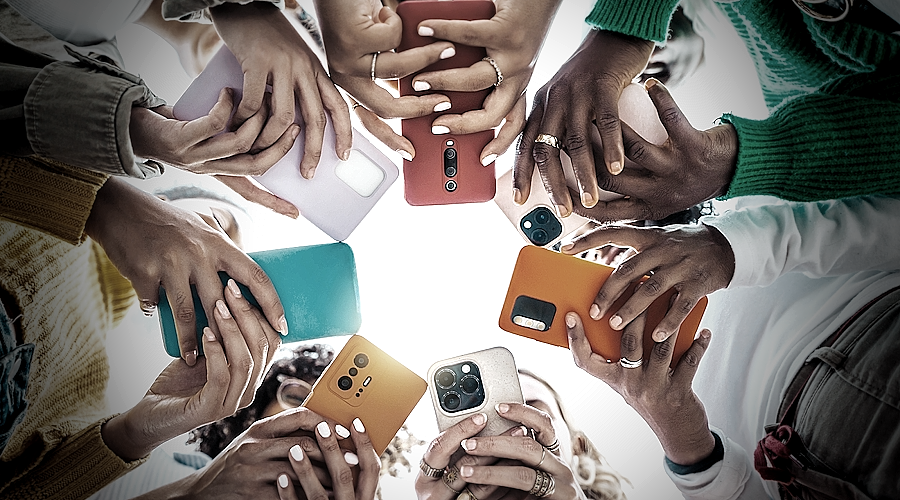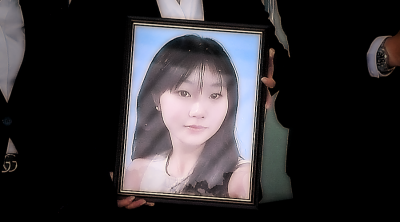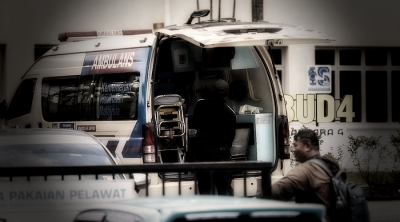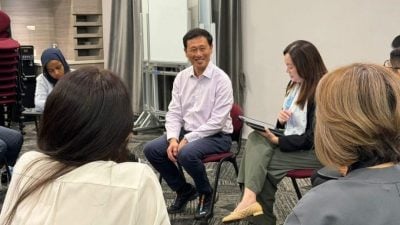
Are our schools still a place we can entrust our children to? That has been a question Malaysians have persistently asked ever since the tragic killing of Yap Shing Xuen.
And the infuriated public have started to toss in other recent cases of suicide, bullying and gang rape involving students, and have wanted Education Minister Fadhlina Sidek to take full responsibility and resign.
Some others opine that these unfortunate incidents have been a product of anomaly in our existing education system.
As a matter of fact, this phenomenon is by no means exclusive to Malaysia, but has sadly evolved into a global dilemma—human anxiety stemming from a knuckle action!
Similar tragedies happen not only in schools, but every nook and corner across our planet—anxiety has developed into a collective lifestyle of humanity.
When we surrender our lives in entirety to the wired world and devices, anxiety begins to erode each and every momentary and precious life like a wildly spreading virus.
Many find themselves helplessly trapped in the cyber cobweb, unable to find the meaning of life and subconsciously spending their days in complete apprehension.
Right then what we verily need is collective awareness. Governments, parents, school authorities, and the media will have to come to senses and act promptly in a bid to stop more tragic suicides, bullying, rapes, and random killings from recurring in our midst.
The government should stop chanting meaningless slogans and emulate other developed nations in enacting laws to ban children in year six and below from gaining access to mobile phones and other digital devices, and bring them back to good old paper learning.
At the same time, age restriction must also be imposed on minors setting up their own social media accounts, while limiting their usage of mobile games. This is to prevent the minors from getting morbidly addicted to the virtual world too early.
Many countries have come to see the gravity of the problem. South Korea, Sweden, Australia, Italy, the Netherlands, Finland, UK, US and France, among others, have adopted relevant measures, some even extending the bans to high school level.
At a time when misinformation has infiltrated every human living space, the government should more than ever support and work with media organizations to help push physical newspapers into every primary and secondary school classroom, in order to improve the students’ concentration as well as independent thinking and an ability to tell right from wrong.
Newspaper reading is a process that gradually flows from left to right, line by line, allowing the reader to have the room to contemplate and comprehend.
Unfortunately, modern-day people are very much more accustomed to swiping across their mobile screens, and have grown to be highly agitated and impatient. They are more inclined to browse only headlines and short videos lasting no more than a couple of seconds, and yet believe they have the whole truth at their fingertips!
Meanwhile, adults very often oversimplify the ramifications of the wired world. They could neither control what their children have access to online, nor the internet slang prevalent among Gen Z-ers and Alphas.
These kids have already constructed their own digital ecosystems, and are habitually tethered by anxiety to their unique worlds far beyond what their schools and parents can understand.
As a matter of fact, technological advancement has entrenched intergenerational gap. Children today have been groomed into devoted practitioners of total individualism at the expense of communal feelings and human connections.
Because of that, in this era of collective anxiety, parents no longer need to worry that their children will be left behind by technology. In its stead, the real risks lie in their continued trust in delegating their children’s educational responsibility to mobile phones and other digital devices.
As parents, we must first control our own digital addiction while not thoughtlessly feed our children with mobile phones or other devices.
What our children need is not the screen, but our love and company, sports, toys and nature. They need to revert to paper reading to explore the ocean of knowledge with enhanced focus, composure, and a heart liberated from boundless anxiety.
We have no way to tell how the content which pops up when our children swipe across their mobile screens will subconsciously shape their character and thinking.
Studies show that a child chronically addicted to mobile phones and games will not only be overwhelmed by anxiety and restlessness, but will also have his precious social skills smothered, and family bonds screwed up.
As for the school, the pressing task now is to reform the already hopelessly outdated education policies. Family education aside, the school is the primary site that grooms a child and builds his character.
But the sad reality is: parents and teachers nowadays are often powerless to bring the kids under control. And given the ban of physical punishment at school, teachers find their authority increasingly thinned out.
Children today no longer fear their teachers. On the contrary, teachers become fearful of students as well as their parents, as evidenced by recent prosecution of a teacher for physical punishment.
The value system and thinking patterns of many modern-say children have been derived from internet. The virtual world has obscured the boundary with the realistic world, rendering the kids incapable of telling the truth from lies. As a consequence, violent games have become their one and only outlet to vent their suppressed emotions.
When a teacher loses his soul, our children dread becoming parents themselves, the government no longer shoulders its responsibility, and the media only go after traffic numbers—what will become of our society even if we boast superior technologies and powerful AI capabilities?
Social media platforms have become a hotbed for the dissemination of erratic thinking among their young addicted fans. In the meantime, technology is depriving the kids of their sensory acuity and emotional depth—they have grown numb to violence and emotions. Simply put, diminished empathy.
The growingly serious emotional problems of our children have more often than not neglected by our society, teachers, parents, as well as the media.
They grow up under overprotection, lack the experience in confronting pains and agonies, and are therefore unable to understand the meaning of “staying live.”
They also lack goals of life and the momentum for self-pursuit.
When they get excessively engrossed in their own wired worlds, interpersonal interactions in real life become scarce, their inner beings increasingly hollow.
The biggest pressures encountered by modern-day students are not entirely related to their school work, but the inability to communicate.
Under such circumstances, teachers must move with the times and try to understand the inner worlds of their pupils. Such a module needs to be incorporated into any teachers’ training college curriculum.
As for the education ministry, it must immediately unload the teachers’ seemingly unending administrative duties to allay their anxiety so that they can now focus on educating the young.
In the meantime, society must work together in unison to help rebuild the thinning respect for teachers among the children, while the teachers must win back their dignity professionally, with love and care!
The parents must also learn to communicate positively with the teachers instead of squarely blaming them for everything that goes wrong with their children.
A loving teacher who listens often has powerful and lasting influence on his students.
As for the media, the way they handle Yap Shing Xuen’s merciless killing comes under public spotlight.
The readers’ concerns are heard, and we are equally devastated by the teenage girl’s misfortune.
Some allege that the media is blood-thirsty, continuing to exploit the victims. But as a matter of fact, we have been constantly working hard to dutifully perform our journalistic obligations.
Many a time, people tend to confuse traditional media with content farms on social media platforms, self media, or online media.
I have to admit that occasional headlining and news presentation in traditional media are indeed discomforting to the reading public, and because of that we have been regularly conducting internal reviews to make sure our news reports will not inflict secondary harm to the victim’s family.
After the tragic incident, one of our websites at one time presented the “Chinese male student stabs Chinese female student to death” headline, from which I immediately ordered the deletion of the words “Chinese,” and instructed that when presenting social news in future, any implication that could protrude intercommunity stereotypes, prejudices and ill-feeling must be avoided at all costs.
I told the editors: If we overemphasize the ethnicity, we could be accused of manipulating racial issues in a case that involves multiple ethnicities.
In fact, anyone can tell the ethnic identity of a person simply from his name, and there is no need for any elaboration. The media has a social obligation and we cannot afford to complicate things further against the backdrop of an increasingly uncontrollable social media mood.
Several chief editors had a thorough discussion before we decided which of the female victim’s pictures should be published. The company lawyer’s views were also consulted for possible contravention to The Malaysian Children’s Act 2001, while taking journalistic ethics and professionalism into serious consideration.
In the end, we decided to publish the pictures only after we had been convinced that the action would not violate any relevant law or the principles of journalism.
Sure enough, if the victim is still alive, this picture will never go into print.
I keep reminding my colleagues that we as media practitioners must always have empathy towards the victim in upholding industrial ethics, our own credibility and professionalism.
What needs to be discussed here is not merely journalistic ethics but whether we as media practitioners show empathy and compassion, a moral obligation humanity must safeguard.
Meanwhile, we need to come to full realization that the media not only wields tremendous social influences, it could potentially bring massive destruction as well.
Many think that they know very well what we just mentioned, but getting their children to stay away from mobile phones and the virtual world is an immense tall order, for the simple reason that neither the parents nor their kids or society as a whole can pull themselves out of the social media morass once they have a foot stuck in it.
That being said, I beg to differ. If the situation has gone beyond remedy, Western governments would not have taken the resolved action in an attempt to save the children.
A society in jitters needs more than anything else the courage to slow down!
Imagine, when a teacher loses his soul, our children dread becoming parents themselves, the government no longer shoulders its responsibility, and the media only go after traffic numbers—what will become of our society even if we boast superior technologies and powerful AI capabilities?
ADVERTISEMENT
ADVERTISEMENT








































